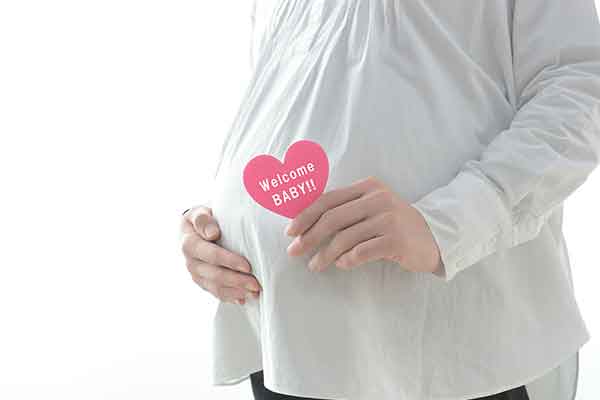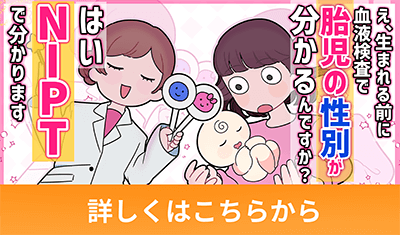Summary of this article
The term “near term” refers to one month before the due date. It is advisable to keep your body moving with household chores, walking, and light exercise when you feel well, and to make preparations for childbirth and postpartum. On the other hand, it is best to avoid lifting heavy objects, applying strong pressure to the abdomen, long-distance or prolonged travel, and driving cars or bicycles, etc.
- What is Near Term?
- When Does Near Term Begin and End?
- Changes in the Baby During Near Term
- Changes in Pregnant Women During Near Term
- Common Symptoms During Near Term
- How to Spend Near Term
- Until When Can NIPT (Non-Invasive Prenatal Testing) Be Done?
- Conclusion
What does Near team mean?
Near term refers to the period just before childbirth. It’s a term commonly used rather than a medical term.
When does near term start and end?
Near term refers to one month before the expected due date. This is typically what is called “10 months of pregnancy” or gestational weeks 36 weeks 0 days to 39 weeks 6 days.
In medical terminology, “term pregnancy” or “full term” refers to gestational weeks 37 weeks 0 days to 41 weeks 6 days, which is different from near term.

Changes in the Baby During Near Term
Near term is the period just before childbirth. The baby, in this stage, has grown to the point where their brain, heart, lungs, and skin are developed to a level similar to that of a newborn, allowing them to adapt to the outside world whenever they are born. Their height and weight continue to increase steadily, and they develop subcutaneous fat, becoming plump and resembling a typical baby.
Fetal Movement During Near Term
Near term marks the beginning of preparations for the baby’s birth, as they transition from moving freely in the amniotic fluid to getting ready for delivery. There are also changes in fetal movement during this time.
The baby starts to curl up, crossing their arms and legs in front of their body, and gradually descends into the pelvis. This positioning makes it feel like fetal movements are decreasing, as their head fits snugly into the pelvis.
However, there are individual differences in fetal movement, and many babies continue to move their arms and legs vigorously until the day of delivery.
Just because it’s near term doesn’t mean that the baby’s movements completely stop. The common belief that “fetal movements decrease as delivery approaches” is incorrect. Fetal movement is a sign of the baby’s well-being. A decrease in fetal movement could indicate a dangerous condition such as fetal distress or stillbirth.
If you notice a decrease in fetal movement or if it takes longer than usual to count movements, it’s important to consult your doctor immediately.
Changes in Pregnant Women During Near Term
During near term, changes occur not only in the baby but also in the pregnant woman’s body.
Near term is a period of rapid weight gain for the baby. As the baby’s weight increases, it can lead to compression of the mother’s organs, resulting in feelings of nausea, vomiting, and discomfort. However, as childbirth approaches and the baby’s position gradually lowers, the feeling of pressure on the stomach tends to decrease. Additionally, sensations such as chest pressure, palpitations, and shortness of breath also decrease. On the other hand, due to the pressure on the bladder, urinary leakage and frequent urination are more noticeable during this time.
Common Symptoms During Near Term
I have summarized the common symptoms during near term below.
Braxton Hicks Contractions
Braxton Hicks contractions, a sign of impending labor, are characterized by irregular mild abdominal tightening. In addition to abdominal tightening, you may also experience mild lower back pain, nausea, and pain similar to menstrual cramps.
Nausea, Vomiting, Feeling Unwell
The hormone “progesterone,” which is abundant during pregnancy, has a relaxing effect on the digestive system. As the abdomen enlarges during near term, the mother’s internal organs may be compressed. As a result, digestive issues such as indigestion, loss of appetite, stomach discomfort, nausea, and vomiting become more common.
Groin and Pelvic Pain, Pubic Symphysis Pain
As near term approaches and the abdomen enlarges, the baby gradually descends. As the baby descends, the joints around the pelvis, which have softened due to the action of female hormones, become more mobile, placing strain on the pubic symphysis, a part of the pelvic bones.
Furthermore, to support the growing abdomen, strain is placed on the pubic symphysis and hip joints, leading to pain in the groin, pelvic pain, pubic symphysis pain, and lower back pain. Swelling and fatigue in the legs may also occur, so it’s important to rest without overexerting yourself.
Increased Vaginal Discharge
Vaginal discharge is influenced by female hormones, and there is a tendency for it to increase as childbirth approaches during near term. Symptoms similar to vaginal discharge include “bloody show” and “rupture of membranes.”
“Bloody show” is also called the mucus plug, and it refers to thick vaginal discharge that is transparent or pinkish with a slight blood tinge. This may occur several days to two weeks before childbirth.
While there are individual differences in the amount and characteristics of vaginal discharge, heavy bleeding resembling menstruation is abnormal. If you notice a significant increase in vaginal discharge or if it has a different odor or appearance than usual, it’s important to seek medical attention promptly.
“Rupture of membranes” refers to the leakage of amniotic fluid. If you experience a watery discharge that occurs when you move, it’s likely a rupture of membranes, and you should seek medical attention promptly.
Feeling Tired, Insomnia
The hormone “estrogen,” which is abundant during near term, not only maintains pregnancy but also tends to disrupt sleep at night. Additionally, as the abdomen enlarges and becomes heavier, daily activities may consume more energy, leading to increased fatigue and drowsiness.
However, attempts to sleep may be disrupted by vigorous fetal movements, a feeling of breathlessness, or the urge to urinate, leading to many pregnant women feeling tired and unable to sleep well.
Constipation, Diarrhea
The hormone “progesterone,” secreted during pregnancy, peaks around the eighth to ninth month and gradually decreases toward childbirth. Progesterone has the effect of suppressing intestinal movement, so periods of high progesterone secretion are prone to constipation, while decreased progesterone secretion can lead to relief from constipation and increased susceptibility to diarrhea. Additionally, the pressure exerted by the growing baby may compress the intestines, slowing down bowel movements and leading to constipation or diarrhea.
How to Spend Near Term
Near term, when the baby could arrive at any time, is a period when the mother’s body experiences increased strain as the baby grows. Some mothers might feel bored or worry if they’re spending too much time sleeping, but the most important thing is the health of both the mother and the baby. It’s essential to listen to your body and avoid overexerting yourself.
When you’re feeling well, it’s good to engage in light household chores, walking, or gentle exercises to keep your body moving and to continue preparations for childbirth and postpartum. Additionally, there will be more opportunities to take photos after childbirth. Since you might not have time to go to the hair salon due to the busy demands of childcare, consider pampering yourself by visiting the salon for a hair treatment or enjoying delicious food during this relaxed time.
Things to Avoid During Near Term
Near term should be a time for both the baby and the mother to relax without pushing themselves too hard. Here are some things to avoid during near term:
Lifting heavy objects
Lifting heavy objects can strain the abdomen too much or disrupt balance, leading to fatigue. It’s best to avoid this.
Strongly compressing the abdomen
Avoid situations where the abdomen is strongly compressed or subjected to strong impacts, such as crowded trains or crowded places.
Long-distance or prolonged travel
During near term, when childbirth could happen at any time, avoid traveling to places far from your regular maternity hospital. Remote areas or areas with sparse medical facilities can pose challenges in finding medical care, and it’s difficult to find a healthcare provider in an unfamiliar location. To protect the baby’s life, it’s best to avoid long-distance or prolonged travel.
Driving a car or riding a bicycle
It’s not recommended to drive a car or ride a bicycle during near term because labor could start at any moment. Furthermore, riding a bicycle increases the risk of losing balance and falling, leading to injuries. During near term, opt for public transportation during off-peak hours or rely on family members’ driving or public transportation for transportation.

Preparations Before Childbirth
There are three things you’ll want to prepare before childbirth. Let’s gradually work on them so that you won’t have any trouble before or after childbirth.
Preparation of Labor Bag and Hospital Bag
Near term is a time when labor could start at any moment. A labor bag is a bag packed with essential items that you’ll want to bring with you when labor begins. This includes your maternity record book, ID card, writing utensils, facial towels, a bottle with a straw, masks, hand sanitizer, and other COVID-19 prevention items, as well as items required for childbirth and immediately afterward as specified by the hospital.
The hospital bag contains items for use during your hospital stay and after discharge. This includes maternity underwear, nursing bras, breast pads, a round cushion or nursing pillow, your outfit for leaving the hospital, and a ceremonial dress for the baby. Don’t forget to include skincare and makeup items.
Preparation of Baby Items
Prepare baby items so that you’re ready whenever the baby arrives. In addition to purchasing items, wash clothes and linens, and air out bedding to have everything ready for immediate use.
Preparation for Postpartum Notifications and Gifts
Things can get hectic after childbirth. Decide in advance who you need to notify after childbirth and what kind of gifts you’ll give.
NIPT (Non-Invasive Prenatal Testing) can be taken until when?
Generally, NIPT (Non-Invasive Prenatal Testing) can be taken once pregnancy is confirmed through ultrasound. It examines the possibility of chromosomal abnormalities in the baby using the mother’s blood, also known as non-invasive prenatal genetic testing. This test can assess risks without posing any burden on the baby.
Since it’s a screening test (non-definitive test), if the result is positive, it’s necessary to undergo confirmatory tests such as amniocentesis to confirm the diagnosis. The timing for undergoing amniocentesis is around weeks 15 to 18 of pregnancy, so it’s recommended to take NIPT (Non-Invasive Prenatal Testing) around weeks 15 or 16 of pregnancy.
If you’re past week 18 of pregnancy but still concerned about chromosomal abnormalities in the baby and wish to undergo testing before childbirth, Hiro Clinic NIPT allows testing as long as the fetus is in the womb, so feel free to consult for reservations. However, if you undergo the test during near term, there’s a possibility of giving birth before the test results are available.
Conclusion
Near term is a period when childbirth could happen at any time.
It’s essential to correctly understand the changes occurring in both the mother and the baby in preparation for childbirth and to go through near term without pushing oneself too hard.
【Reference】
- Japan Society of Obstetrics and Gynecology – Japan Association of Obstetricians and Gynecologists – Obstetrics and Gynecology Practice Guidelines – Obstetrics Section 2020
Article Editorial Supervisor

岡 博史先生
【役職】
【資格】
【略歴】
【所属】
【SNS】
 中文
中文












